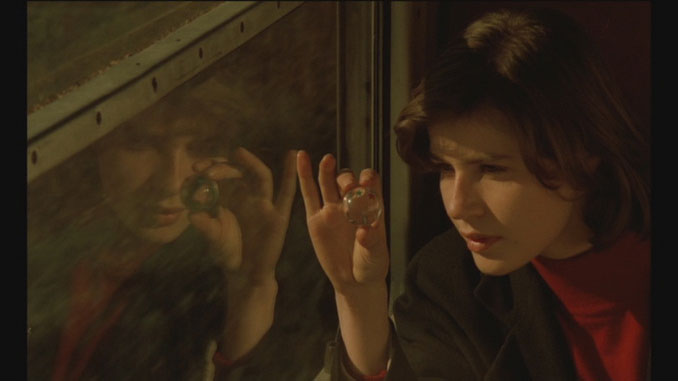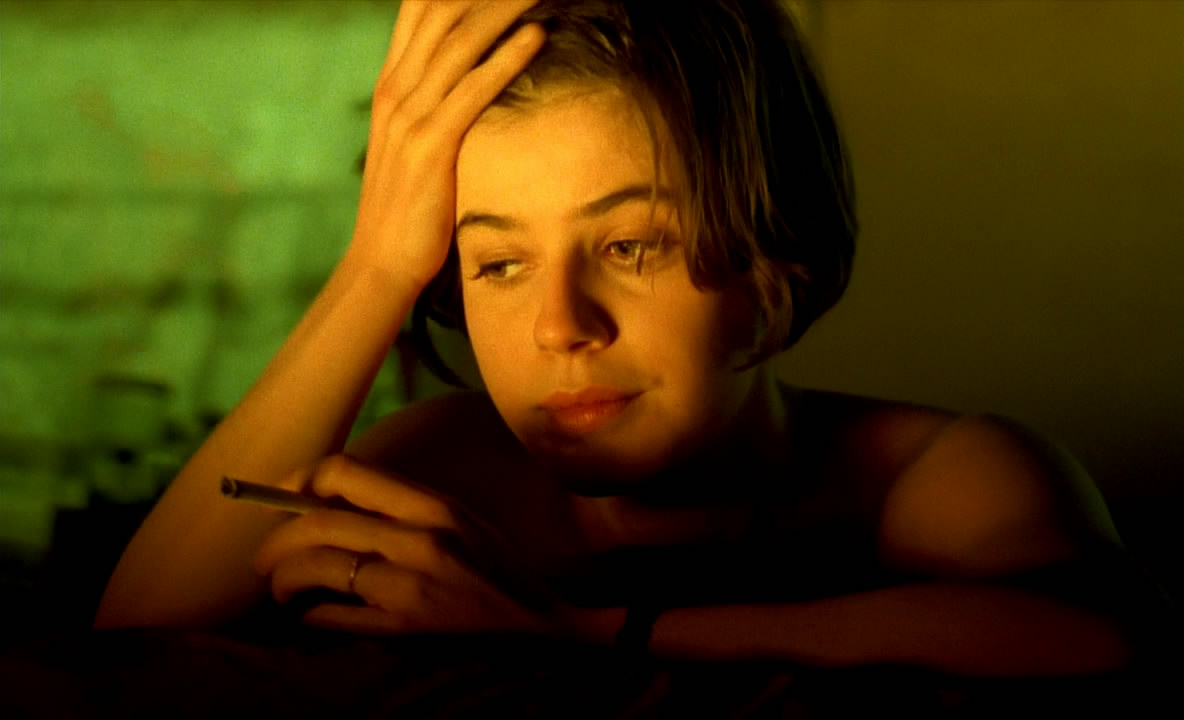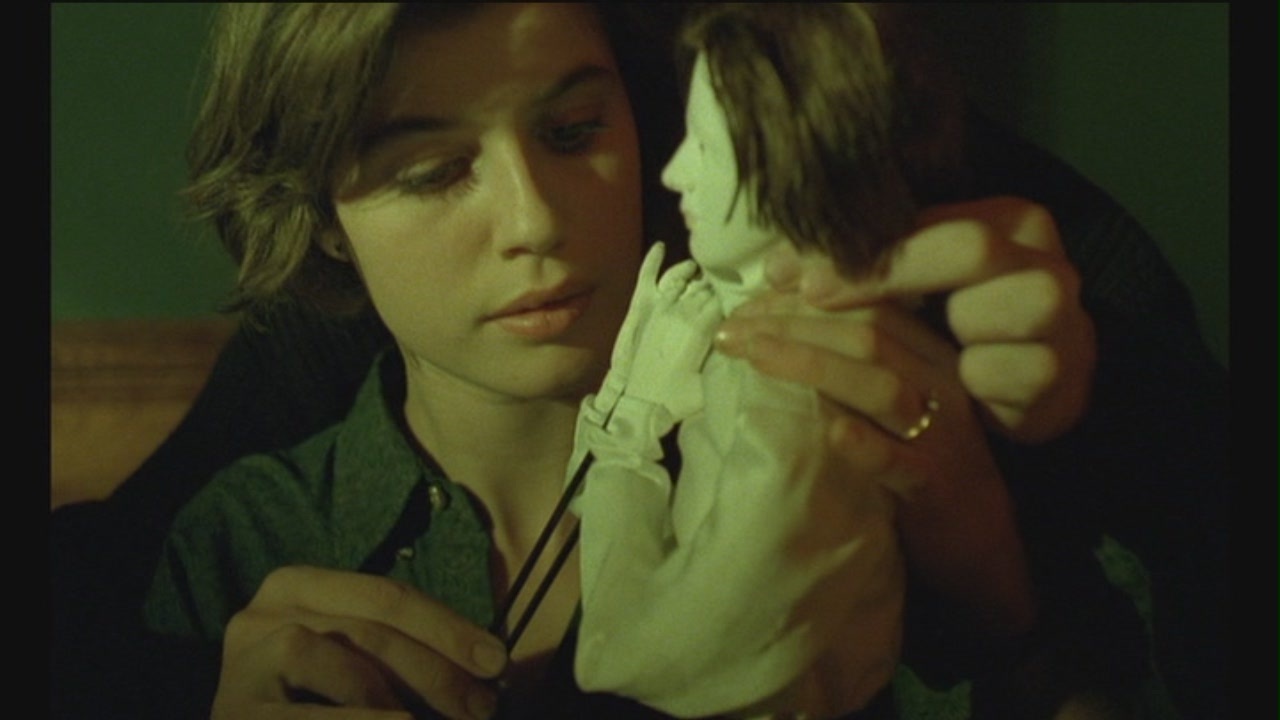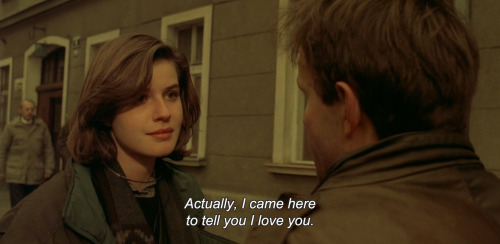
Krzysztof Kieslowski is one of those rare directors who can reach the viewer in an almost unexplainable way. You can try to analyse this connection, but it is a form of psychic connection that just happens. He once said: “I try to make films which connect people.” It is similar to Bergman in a way, since he also stressed, throughout his movies, the importance of meaningful communication between people, but Kieslowski’s approach is quite different.
While Bergman explores the human soul in tragic circumstances, Kieslowski explores the question of meaningful life its moral aspects (in “Dekalog”, for instance), and what it truly means to be human.
Kieslowski’s connection with his native Poland is particularly important to understand this great director, starting from his career as a director of documentaries, until later in his career that ended with the “Three Colors” trilogy.
Poland is a unique country, one that is beautiful but burdened with a feeling of tragedy that characterizes its place in history. The Poles suffered greatly, especially under the communist regime. This particular melancholy and a sense of lost time can be traced in Kieslowski’s movies, and are important to understanding him as a director and as a human being.
It could easily be claimed that the finest Kieslowski’s accomplishment is “Three Colors: Blue”, which is breathtaking and won him the Best Film award at Venice Film Festival, or “Three Colors: Red”, which received Oscar nominations in three categories, but here, the reasons will be presented why “The Double Life of Veronique” is not only his best film, but a perfect film.
The inspiration for making this film could have been an experience of a psychic connection, perhaps with a woman. It may have transcended the usual relationships between human beings, involving sincere care for that person’s well being and, it can almost be said, pure empathy. This film’s subject is precisely that: a connection that is beyond the barriers of space and time.
The movie is about two women who look exactly the same and lead similar lives. Weronika is a vocal soloist, and Veronique teaches music, but they have never met each other.
The only time they are physically near is when Veronique takes a picture of Weronika while she is riding on a bus. This scene shows the imaginary character of their relationship, which is transformed into art. Weronika dies, but Veronique feels love toward her. The connection is broken, but it lives on.
1. Irène Jacob’s performance

What makes this movie truly unique is Irène Jacob’s performance. She received the Best Actress award at the Cannes Film Festival Award for it, and it was more than deserved. As Weronika and Véronique, she is gentle, sensitive, innocent, and childlike at times, but also feminine and erotic.
Her facial expressions, movements, and the way she talks are all perfectly executed in a fashion that is both captivating and mesmerizing. Her presence on the screen is gracious, but also shows that she possesses a strength of character. That kind of performance could only be delivered by someone with great discipline and a sense of duty toward creating art.
She is beautiful, a woman in her prime, but also someone who is capable of deep emotions; she almost blends with a character as she becomes both Weronika and Veronique. Scenes in which she appears half naked are truly erotic, but never cross the line of becoming simply an object of desire. Her body is not just flesh; it becomes art. In one word, she is sublime.
2. Music as the soul
The music for the film was composed by Zbigniew Preisner. In this film, as in other films by Kieslowski, it is attributed to a fictional composer who lived 200 years ago, Van den Budenmayer. This attribution is interesting because it gives the viewer an impression of antiquity and beauty.
The flute evokes a feeling of longing, and the piano a sense of loss and abandonment. It sounds like a distressful memory that is forgotten, but stays in the mind. The music is playful and joyful at times; it portrays innocence, but soon deep and melancholic sounds appear that anticipate tragedy.
In Hollywood movies, music is often just a tool to express either a character’s emotions or plot twists, while in Kieslowski’s movies, especially this one, it is the heart of the movie. It intensifies Weronika’s emotions, building up to a climax, and it is a leitmotif throughout the movie. It could be said that if visuals are the flesh of the movie, then dialogues are the bones, and music is its very soul.
3. Art direction

Kieslowski is a true sovereign in this aspect of the movie, and what he presents is visual poetry. To truly grasp the meaning of that phrase, one must understand what poetry means for European civilization.
It is a sign of capability for intense and rare emotions, peculiar creativity, and insight in the soul of man. It is valued as one of the highest of arts. Only a few directors deserve to be called visual poets; Andrey Tarkovsky, whom Kieslowski respected himself, and Terrence Malick among the contemporaries, to mention a few.
Visuals in this movie are completely stunning; even when Veronique washes her hands in the sink, the scene is beautiful. Not to mention, visuals of landscapes or urban areas are also beautifully filmed; colors in the movie intensify and present emotions and depict beauty in a rare fashion.
Some of the scenes look like they are inspired by impressionist paintings, and on the other hand, they are so simple and worldlike that they trick the viewer into thinking that what he watches isn’t just art, but a distinct human experience from life itself.
4. Dialogues are intrinsically human

Dialogues, although simple, are as powerful as the philosophical arguments in Bergman films, for instance. Their uniqueness lies in their simplicity, and the connection with a viewer is established in a profound way. During the conversation between Weronika and her aunt, you can feel their connection and love they feel for each other.
Also, the conversation between Veronique and her father shows their bond as strong and loving. She tells her father openly that she loves someone, the most intimate of feelings. Her father is caring, and while remembering her as a child, he calls her “petite”.
The writer of children’s books and the puppeteer is the only person in the movie who acts manipulatively, but soon he shows his human face and passion toward Veronique. The connections that Kieslowski wants to portray to the audience are vivid and sincere, and the dialogues transfer that message in the best possible way. The script is meticulously crafted, but still warm.
5. Blurring of temporal and spatial relationships

Although it presents the plot chronologically, it can easily be imagined as if the end of the film is its beginning, logically speaking. As if the plot is a fantasy of a writer in the film, as well as a fantasy of a director. Polish and French urban and rural areas sometimes blend into a psychic experience of a protagonist.
As an example, Veronique says, with dreamlike eyes: “I must have been dreaming. I saw a drawing. Very simple, even primitive. A sloping road in a small town with houses on both sides and a church in the background.” Her father replies: “Chagall?”
What Veronique saw was a drawing of scenery in Poland, most likely the church that is shown in Weronika’s crystal ball in one frame. Her father replies with a question suggesting it is a painting from a Russian-French painter replacing the signified, and they consequently became one for a moment. In a way, Veronique was dreaming; it was a supernatural experience of a connection with Weronika.